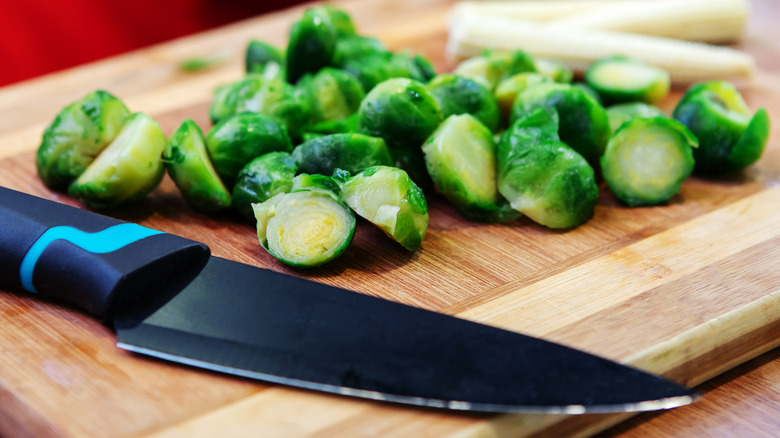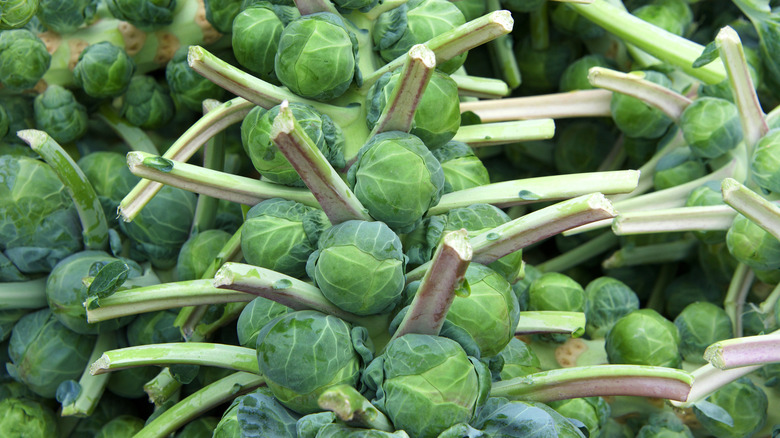How You Should Actually Be Trimming Brussels Sprouts
Brussels sprouts are a finicky green vegetable that needs careful attention to be delicious; if consumed raw, they have a slightly bitter flavor, and if not prepared or cooked well, they can come out just as bland in their natural state. While there isn't too much preparation needed for the miniature green cabbage, once your Brussels sprouts are washed, the next step is to usually trim 'em before cooking.
Since Brussels sprouts are a cultivated variety of wild cabbage (also known as Brassica oleracea, via The Old Farmer's Almanac), they grow as a plant, which consists of flowers, leaves, buds, a stem, and roots. The Brussels sprouts are the buds that form off of a stem, and usually when you buy your sprouts from your local grocer or farmers market, some of that stem remains. The toughest part of the Brussels sprout is the stem, and the toughest part of preparing this vegetable also happens to be trimming the Brussels sprout stems off correctly.
A balance between too much and too little
Like with most things, moderation and balance are key considerations when trimming your Brussels sprouts. According to Home Cook Basics, one of the fatal mistakes you can make when preparing Brussels sprouts is to trim too much or too little of the stems. The reason is that when you trim too much of the stem off (like you would with a cabbage), the integrity of the Brussels sprout is lost and the tiny leaves have nothing left to hold on to. If you err on the side of caution, though, and leave too much of the stem on the Brussels sprout, the result will be an overly chewy stem that will be hard to swallow, no matter how much you masticate.
The solution to trimming your Brussels sprouts? Strike a delicate balance and don't trim too much off to ensure roasting perfection. If you need another tip to ensure your core won't be too tough, FineCooking has just the trick: Just score an "x" onto the base of your Brussels sprout to make sure each sprout cooks through evenly.

